Camino del Norte Stage 3 - Santander to Gijon
- The seafood and cider of Gijon
- The contrast of quiet fishing villages and modern cities
- The Tito Bustilla caves in Ribadesella
- Meeting fellow pilgrims and sharing your stories
- Enjoying the peace and tranquillity of this quiet route
Gallery
Itinerary
Day 1 Arrival in Santander & overnightYou will travel to Santander, the elegant capital of the region of Cantabria. Picturesquely situated on a wide bay, the city captivates visitors with its blend of maritime flair and historic architecture. The cafés and parks along the beach promenade are perfect for lingering, and the old town entices you with its lively atmosphere. If you wish, you can take a walk to the magnificent La Magdalena peninsula and enjoy the stunning coastal views. Your journey will begin in relaxed fashion in one of the most beautiful port cities in northern Spain.

This modern hotel opened in 2003. It offers 92 spacious rooms featuring contemporary style furniture. Rooms have a safe, minibar, large desk with optional internet connection, TV and Canal + and individually controlled air conditioning and central heating. The bathrooms are equally spacious and bright, equipped with magnifying mirror, heated towel rail, telephone, background music and amenities designed by Javier Mariscal.
In the morning, you will be transferred to the Ermita Virgen del Monte chapel, where your hike will begin. From there, the trail winds through picturesque countryside to the medieval town of Santillana del Mar, whose historic appearance has remained virtually intact to this day. Take a stroll through the cobbled streets and admire the charm of the old stone houses. Be sure to visit the 12th-century Collegiate Church of St Juliana, as well as the nearby Altamira Cave, which is famous for its prehistoric paintings. Spend the afternoon discovering the culture and history of this special place at your leisure.
Ascent: 212m (696ft) / Descent: 164m (538ft)

The accommodation is located in a palace dating from the 18th century, found in the centre of Santillana with a magnificent facade and a beautiful terrace garden. It is decorated with antique furniture. Rooms are carefully decorated in a classic style with private bathroom, telephone and TV. The hotel has a restaurant, café and private parking.
Gentle hills and small ascents and descents lead you to Comillas, a charming coastal town. The historic centre is well preserved and perfect for strolling around and lingering in. One of the town's highlights is El Capricho, Gaudí's unique little castle, which is definitely worth a visit. The picturesque alleys and squares capture the essence of the region.
Ascent: 482m (1,581ft) / Descent: 540m (1,772ft)

Hotel Comillas provides 30 rooms, equipped with TV, air conditioning, telephone, safety deposit box and private bathroom, and free WiFi. The building is surrounded by a 4000m garden with pool.
Today's stage will take you along quiet, winding paths to the picturesque town of San Vicente de la Barquera, which is situated on a peninsula. From the higher part of the town, you can enjoy impressive views of the inlets and the surrounding mountains. Take a stroll through the charming old town, with its narrow streets and historic buildings. The harbour and waterfront promenade are perfect places to relax and enjoy the fresh sea air.
Ascent: 200m (656ft) / Descent: 210m (689ft)

The accommodation offers 16 rooms located in the upper part of San Vicente with the best views of the area. Despite being in centre of town, the hotel enjoys a quiet environment to enjoy the big terraces and green areas in a familiar and warm atmosphere. Facilities include piped music, television, cafeteria, heating, air conditioning in lounges, and internet in the rooms.
Starting in San Vicente de la Barquera, follow the Camino del Norte along the coast until you cross the border into Asturias at Unquera. As you walk, the beaches become wilder, the cliffs rougher, and the views become even more spectacular. This varied route combines coastal panoramas with lush green landscapes further inland. Your destination is Bustio, a small town with a maritime flair and the perfect gateway to Asturias. Here, you can end the day in a peaceful setting.
Ascent: 239m (784ft) / Descent: 245m (804ft)

El Rincón de Bustio offers 6 tourist apartments, each accommodation up to 4 guests, and 6 double rooms. This tourist complex has a private car park, and restaurant.
Today, you will be accompanied by impressive scenery. To your left are the mighty Picos de Europa, towering above you, and to your right is the rugged coastline of the Cantabrian Sea stretching out before you. The route will take you through varied green landscapes and small villages, along picturesque bays. Time and again, you will be rewarded with magnificent views of the limestone massif and the vast ocean. Your destination today is Llanes, a lively town with a maritime atmosphere.
Ascent: 339m (1,112ft) / Descent: 333m (1,093ft)

The accommodation is located on the beach and close to the city centre. There are 40 rooms with great views of the sea. All are equipped with TV, telephone, mini bar, heater, and safety deposit box. The hotel has a restaurant and a coffee shop, and breakfast is served on the terrace.
The trail winds its way through a charming, hilly coastal landscape. Magnificent views of the sea and the green pastures of Asturias open up again and again. Then it heads inland for a while, passing small, traditionally charming villages. There are cosy places along the way where you can take a break. Finally, you arrive in Ribadesella, a vibrant coastal town boasting a picturesque old town and a spacious beach.
Ascent: 265m (869ft) / Descent: 266m (873ft)

A 3 star new-built hotel ubicated close to the beach, which rooms are provided with private bathroom, TV, minibar, safety deposit and telephone. The accommodation also offers library, heating and cafetería.
Starting in Ribadesella, the route takes you past the lively riverbank and out into the open countryside. The route is characterised by gentle hills, green fields and idyllic villages such as San Pedro, while magnificent views of the sea and cliffs accompany you along the way. Small forests and quiet paths provide opportunities for peace and solitude. This section is particularly varied, combining coastal panoramas with rural idyll. Finally, you arrive in Colunga, a charming village boasting a historic church and a maritime atmosphere.
Ascent: 339m (1,112ft)/ Descent: 311m (1,020ft)

Mar del Sueve is set in a traditional Asturian architecture house combining colonial and modern design in its interior. The rooms feature private bathrooms with hairdryer, minibar, heating, safe deposit, satellite TV and free Wi-Fi. The hotel also provides coffeshop, private garden and elevator.
You will start by passing the historic Iglesia de San Cristóbal, after which the route will take you through small villages and along rural paths lined with lush meadows and fields. Gentle hills, shady forests and magnificent views of the green landscape will accompany you along the way. The route crosses the A-8 motorway several times, charmingly combining nature and modernity. Shortly before Villaviciosa, you will pass through apple orchards, the scent of which fills the air. Finally, you will reach Villaviciosa, home to the impressive Santa María de la Oliva church, which marks the end of the stage.
Ascent: 331m (1,086ft) / Descent: 347m (1,139ft)
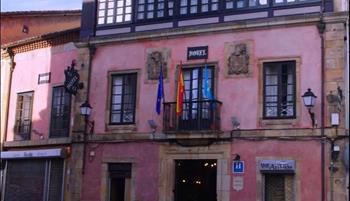
Centrally located Hotel Carlos I is a restored house dating from the 17th century. The rooms are spacious and comfortable, with private bathrooms and TV. In addition, the accommodation has a lounge, library and a cafe.
The trail leads back to the coast via a steep ascent to the Alta de la Cruz viewpoint. En route, you will enjoy impressive views of the sea and the lush green landscapes of Asturias. You will then reach Gijón, the largest city in the region and renowned for its vibrant atmosphere and stunning city beach. The old town and promenade are perfect for a leisurely stroll. Be sure to try a glass of sidra, the region's traditional apple cider.
Ascent: 681m (2,234ft) / Descent: 679m (2,228ft)
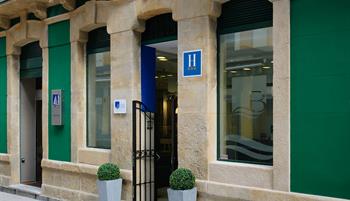
This 3-star modern and comfortable hotel has 35 rooms with air conditioning, satellite TV, telephone, electronic safe, free WIFI and hairdryers. There is a café and private parking (fee payable).
After an eventful few days on the Camino del Norte, today is the day to say goodbye. Depending on your departure time, you may have time for one last walk or coffee in a relaxed setting. Then you can begin your journey home or onwards. You will carry with you many memories of the stunning northern Spanish coastline and the encounters you had along the Way of St. James.
Other Information
Is it for me?The Camino del Norte offers a more authentic pilgrim experience than the Camino Frances. Though the walking is considerably tougher the rewards are arguably much greater.
Pilgrimages | For those looking to follow a path of self-discovery. Our Pilgrimage and Camino routes take you on a journey through diverse landscapes and local flavours, while meeting like-minded adventurers along the way.
Inn to Inn Walking | Walk from place-to-place changing accommodations each night. Generally staying in B&Bs, inns, and guesthouses.
Solo Travellers, Families with Teens
The minimum age for this tour is: 12 Years
This walk is graded moderate overall and includes daily walks of between 13-33km per day.
You can expect to walk for between three and eight hours each day. There are between 220 and 800m of ascent and between 186 and 540m of descent each day.
The Camino Del Norte follows a mixture of farm/dirt tracks, minor roads and footpaths.
The accommodation in larger towns will be in 3-star hotels, the rest will be a mixture of rural hotels and hostals (a name used to describe small Spanish hotels and guesthouses), all with private rooms and en-suite. They all offer a warm welcome to walkers, traditional hospitality and delicious local food. We do recommend that you book this trip early as the area is always popular and the hotels and inns do fill up early, especially in high season.
Solo Walkers & Single Rooms
The Camino is available to solo walkers at a single supplement.
Meals
A local continental breakfast is included each morning, which can sometimes just be coffee, bread and orange juice. PLEASE NOTE: On this section, breakfast is not available at the accommodation in Bustio. It is recommended that you bring something to eat in the morning. Lunch and dinner are not included as standard so you are free to choose from the available options. Every place you stop will have evening meals available, you can get a pilgrims menu for about 10 euros which includes 3 courses, wine and water!
Additional Nights
There is so much to see and do along the route that many of our clients choose to add extra nights along the walk either as a rest day or simply to do some extra sightseeing. If you are walking the route solo try not to add too many extra nights along the way as you will lose touch with those you have met.
Fewer Nights
It is possible to walk the Camino del Norte in less time but we would not recommend this.
The route is marked with yellow painted arrows but please take care at intersections. There are sections on the route where you will divert to follow the red and white stripes of the GR routes. There will always be other walkers around in case you are looking for help. You will be supplied with turn by turn route notes and detailed maps so you will have no problem following the route each day.
In addition to the printed route notes, you will receive in your travel pack, you will also have access to our Macs Adventure App, allowing you to follow the route on richly detailed mapping on your smartphone.
- Accommodation in small rural hotels and hostels with en-suite W/C
- Daily Breakfast
- Baggage Transfers
- Pilgrim Passport and shell
- Camino del Norte Guidebook
- Access to daily route information and GPS tracks via the Macs Adventure Smartphone App
- 24/7 Emergency telephone support
- Return travel to Spain.
- Lunches, dinners, snacks or drinks. Breakfast at Bustio.
- Travel Insurance.
- Personal Equipment.
- Taxi transfers or public transport should you need to skip a stage.
- Additional nights accommodation along the way.
This trip is available to start on any day from the beginning of March to the end of October.
The best time to walk the Camino depends on your personal preference!
Spring (April to June) is a fantastic choice. Expect pleasant temperatures, blooming landscapes, and fewer crowds than summer. Be prepared for the potential of spring showers.
Summer (July and August) brings sweltering heat to much of Spain, but the northern regions remain refreshingly mild thanks to their coastal climates. If you're a social butterfly, this is your season! The trails are buzzing with fellow pilgrims, creating an unbeatable atmosphere for meeting people, local festivals, and sharing stories.
Autumn (September to early November) is another excellent time to go. You'll enjoy milder temperatures, stunning autumn colors, and quieter trails as the summer crowds dwindle. But, much like spring, there's still a chance of rain—because nature loves keeping us on our toes!
Flying to Bilbao or Santander is the best for this. Direct flights are available from London Heathrow, Stansted, Bristol and Manchester.
Should you need to travel between the two cities, this is easily done by taking an ALSA bus, which takes around an hour and a half.
If you are traveling from outwith Europe, Madrid is a good hub to fly into. Santander can be reached by ALSA bus in 5.5 hours and Gijon by train RENFE in 5.5 hours.
Flying from Bilbao or Santander is the best for this. Direct flights are available to London Heathrow, Stansted, Bristol and Manchester.
Should you need to travel between the two cities, this is easily done by taking an ALSA bus, which takes around an hour and a half.
If you are traveling internationally, Madrid is a good hub to fly out of. You can reach Madrid from Santander by ALSA bus in 5.5 hours and Gijon by train RENFE in 5.5 hours.
Baggage transfers are included (max 20kg per person). Your main bag will be transferred each day between your overnight accommodation so that you only need to walk with a day pack. There is a supplement applicable for solo walkers on baggage transfers due to the fact that the transfer costs are usually shared.
Pilgrim Passport & Compostela
Your Pilgrim Passport (Credencial del Peregrino) and scallop shell will be waiting at your first accommodation. The Passport isn’t just practical—it’s a beautiful record of your Camino journey, officially issued by the Church of St. James. Along the route, you'll collect stamps (sellos) from albergues, churches, cafes, and more. Each stamp is a colorful reminder of your journey. To earn your Compostela Certificate in Santiago, you must walk at least the final 100 km, with your stamps serving as proof of this accomplishment.
Please be prepared by packing all necessary items, for example, proper rain gear (jacket and pants), sun hat and sunscreen. Your information pack has a detailed equipment list which includes standard walking/cycling gear such as good walking boots or shoes, warm and waterproof clothes for the cooler months and lightweight clothing for summer, and a day pack.
The average daily distance of our Camino tours are between 20 and 25 kilometers and you can expect to walk for between five and eight hours each day and much of it is rather arduous walking. You should do as much walking as possible prior to your walk as this will simply add to your enjoyment. That said if you are not at peak fitness you will find you will soon walk yourself fit.
A mixture of farm/dirt tracks, minor roads and footpaths. The route is marked with yellow painted arrows but please take care at intersections. There are sections on the route where you will divert to follow the red and white stripes of the GR routes. There will always be other walkers around in-case you are looking for help.
We suggest you book as far in advance as possible as the Camino is extremely popular.Numbers can rise by up to 100, 000 people. We will always try and accommodate late bookings but realistically you need to book at least 6 weeks prior to departure.
Yes, some people prefer to walk carrying their own bags as a true pilgrim would have. You can select the option for removing the baggage transfers in Step 2 of the Booking Engine.
Spring (April to June) is a fantastic choice with pleasant temperatures and fewer crowds for a relaxing experience. The northern regions remain refreshingly mild in July and August thanks to their coastal climates, especially in comparison to central and southern Spain. The trails are buzzing with fellow pilgrims during the summer months. Autumn (September to early November) is another excellent time to go, with stunning autumn colors, and quieter trails. During the spring and autumn, it's more likely to experience a shower here or there. There's really no bad time to travel on the Camino.
Public transport and taxis are available, if you are need of support our local partner in Spain will be more that happy to help.
Unfortunately we are unable to change your accommodation bookings and itinerary once you start walking as alternative accommodation is generally not available at such short notice.
Good news! Your Pilgrim Passport (“Credencial del Peregrino”) and shell will be waiting for you at your first accommodation on Day 1. Think of the Pilgrim Passport as a record of your incredible journey along the Camino, issued by the Church of St. James. The Scallop Shell (or "Concha de Vieira") is an iconic symbol of the Camino and is like a badge of honor. You'll see fellow pilgrims proudly displaying theirs on backpacks or hanging them from walking sticks as a sign of their trek to Santiago.
But here’s where it gets fun—you’ll collect stamps (called "sellos") on your Passport at albergues, churches, cafes, and other stops along the route. To receive your Compostela Certificate at the end of your pilgrimage in Santiago, you need to walk at least the final 100km of the Camino. For other sections of the trail, the Passport serves as a stunning keepsake featuring all the colorful stamps you collect along the way.
-
 Hiking4 Foods You'll Eat on the CaminoRead More2 Min Read26 January 2018
Hiking4 Foods You'll Eat on the CaminoRead More2 Min Read26 January 2018 -
 Blessings Along "The Way" - Part 1Read More4 Min Read20 April 2020
Blessings Along "The Way" - Part 1Read More4 Min Read20 April 2020 -
 Blessings Along "The Way" - Part 2Read More4 Min Read23 April 2020
Blessings Along "The Way" - Part 2Read More4 Min Read23 April 2020 -
 CaminoBlessings Along "The Way" - Parts 3 & 4Read More3 Min Read29 April 2020
CaminoBlessings Along "The Way" - Parts 3 & 4Read More3 Min Read29 April 2020 -
 Blessings Along "The Way" - Part 6: Arriving Into SantiagoRead More6 Min Read02 May 2020
Blessings Along "The Way" - Part 6: Arriving Into SantiagoRead More6 Min Read02 May 2020 -
 Camino23 Essential Camino de Santiago FAQsRead More7 Min Read26 January 2021
Camino23 Essential Camino de Santiago FAQsRead More7 Min Read26 January 2021 -
 CaminoCamino de Santiago Travel GuideRead More4 Min Read26 January 2021
CaminoCamino de Santiago Travel GuideRead More4 Min Read26 January 2021 -
 CaminoWhich Camino is for me?Read More2 Min Read02 February 2021
CaminoWhich Camino is for me?Read More2 Min Read02 February 2021 -
 HikingHistory of the Camino de SantiagoRead More3 Min Read05 February 2014
HikingHistory of the Camino de SantiagoRead More3 Min Read05 February 2014 -
 CaminoEating and Drinking on the Camino Frances - Sarria to SantiagoRead More3 Min Read11 December 2017
CaminoEating and Drinking on the Camino Frances - Sarria to SantiagoRead More3 Min Read11 December 2017 -
 WalkingHow fit do I need to be to walk the Camino?Read More3 Min Read05 December 2017
WalkingHow fit do I need to be to walk the Camino?Read More3 Min Read05 December 2017 -
 Tips & AdviceEssential Phrases for the Camino de SantiagoRead More2 Min Read08 December 2017
Tips & AdviceEssential Phrases for the Camino de SantiagoRead More2 Min Read08 December 2017 -
 What is a pilgrimage?Read More2 Min Read25 May 2023
What is a pilgrimage?Read More2 Min Read25 May 2023 -
 Camino & PilgrimagesKindness, community and comradery on the CaminoRead More1 Min Read27 February 2024
Camino & PilgrimagesKindness, community and comradery on the CaminoRead More1 Min Read27 February 2024 -
 Tips & AdviceWhat is Self-Guided Travel?Read More4 Min Read23 April 2024
Tips & AdviceWhat is Self-Guided Travel?Read More4 Min Read23 April 2024 -
 Camino & PilgrimagesHow to Choose a Camino de Santiago RouteRead More3 Min Read01 July 2024
Camino & PilgrimagesHow to Choose a Camino de Santiago RouteRead More3 Min Read01 July 2024 -
 Camino & PilgrimagesCamino de Santiago Shell Meaning & SymbolismRead More2 Min Read31 January 2025
Camino & PilgrimagesCamino de Santiago Shell Meaning & SymbolismRead More2 Min Read31 January 2025 -
 Camino & PilgrimagesCamino Portuguese Coastal vs Camino Portuguese Central RouteRead More3 Min Read09 April 2025
Camino & PilgrimagesCamino Portuguese Coastal vs Camino Portuguese Central RouteRead More3 Min Read09 April 2025 -
 Camino & PilgrimagesCamino del Norte vs Camino Primitivo: Which is for you?Read More4 Min Read30 September 2025
Camino & PilgrimagesCamino del Norte vs Camino Primitivo: Which is for you?Read More4 Min Read30 September 2025 -
 HikingRobson Green’s World’s Most Amazing Walks with Macs AdventureRead More6 Min Read02 December 2025
HikingRobson Green’s World’s Most Amazing Walks with Macs AdventureRead More6 Min Read02 December 2025 -
 WalkingWhat Makes a Walk a Pilgrimage?Read More2 Min Read22 January 2021
WalkingWhat Makes a Walk a Pilgrimage?Read More2 Min Read22 January 2021 -
 HikingWhen to Use Hiking Poles for Adventure TravelRead More4 Min Read15 May 2024
HikingWhen to Use Hiking Poles for Adventure TravelRead More4 Min Read15 May 2024 -
 Tips & AdviceMacs Adventure Trip Types ExplainedRead More3 Min Read25 October 2024
Tips & AdviceMacs Adventure Trip Types ExplainedRead More3 Min Read25 October 2024 -
 Hiking14 tips for walking in The SunRead More2 Min Read28 June 2018
Hiking14 tips for walking in The SunRead More2 Min Read28 June 2018 -
 HikingThe Basque Country: 15 interesting things to knowRead More3 Min Read20 July 2017
HikingThe Basque Country: 15 interesting things to knowRead More3 Min Read20 July 2017 -
 HikingDiscover: Spain’s fabulous feriasRead More2 Min Read24 January 2022
HikingDiscover: Spain’s fabulous feriasRead More2 Min Read24 January 2022 -
 HikingHiking in Style - You're Worth it!Read More3 Min Read26 August 2019
HikingHiking in Style - You're Worth it!Read More3 Min Read26 August 2019 -
 Tips & AdviceEssential Phrases for SpainRead More1 Min Read24 January 2022
Tips & AdviceEssential Phrases for SpainRead More1 Min Read24 January 2022 -
 HikingWhich part of Spain is right for me?Read More2 Min Read24 January 2022
HikingWhich part of Spain is right for me?Read More2 Min Read24 January 2022 -
 Hiking9 Reasons to Visit CataloniaRead More2 Min Read24 March 2016
Hiking9 Reasons to Visit CataloniaRead More2 Min Read24 March 2016 -
 Hiking5 Must-See Salvador Dalí sites in CataloniaRead More1 Min Read01 February 2022
Hiking5 Must-See Salvador Dalí sites in CataloniaRead More1 Min Read01 February 2022 -
 5 reasons I loved the Sierra de Aracena!Read More1 Min Read15 February 2022
5 reasons I loved the Sierra de Aracena!Read More1 Min Read15 February 2022 -
 10 dishes you have to try in Andalucia!Read More1 Min Read15 February 2022
10 dishes you have to try in Andalucia!Read More1 Min Read15 February 2022 -
 8 Postcards from the Pueblos Blancos!Read More0 Min Read15 February 2022
8 Postcards from the Pueblos Blancos!Read More0 Min Read15 February 2022 -
 Top 8 Beaches of the Balearic IslandsRead More1 Min Read22 February 2022
Top 8 Beaches of the Balearic IslandsRead More1 Min Read22 February 2022 -
 An Insider's guide to MallorcaRead More3 Min Read01 March 2022
An Insider's guide to MallorcaRead More3 Min Read01 March 2022 -
 HikingWhere to go on your hiking vacation in NovemberRead More2 Min Read15 September 2023
HikingWhere to go on your hiking vacation in NovemberRead More2 Min Read15 September 2023 -
 HikingTop Winter Hiking Destinations: The Canary IslandsRead More2 Min Read10 October 2023
HikingTop Winter Hiking Destinations: The Canary IslandsRead More2 Min Read10 October 2023 -
 Sustainable TravelPeople Behind the Scenery - The Wishkeeper of the Catalan CoastRead More2 Min Read30 September 2025
Sustainable TravelPeople Behind the Scenery - The Wishkeeper of the Catalan CoastRead More2 Min Read30 September 2025
-
Save %8 Days 7 Nights
Camino del Norte Stage 4 - Gijón to Ribadeo
Walk from Gijon to Ribadeo along the coast of Asturias in area brimming with historyHighlights- Prehistoric remains and roman ruins
- Selgas with its medieval towers
- Arrive in Santiago de Compostela
-
Save %15 Days 14 Nights
Camino del Norte Stage 1 & 2 - San Sebastián to Santander
Walk the first two stages of the Camino del Norte from San Sebastian to Santander.Highlights- San Sebastian, a gastronomic experience.
- Contrasting fishing villages and modern cities.
- The green hills of the Basque Country.
-
Save %7 Days 6 Nights
Camino Portugués Coastal Way: Stage 1
The first stage of the Camino Portugues Coastal Way - filled with sandy beaches and fishing villagesHighlights- Walk from vibrant Porto to A Guarda in Spain.
- Spot varied birdlife along the coast.
- The historical centre of Viana do Castelo.
Why Macs

As Seen In

Around Since 2003

24,000+ Customer Reviews























































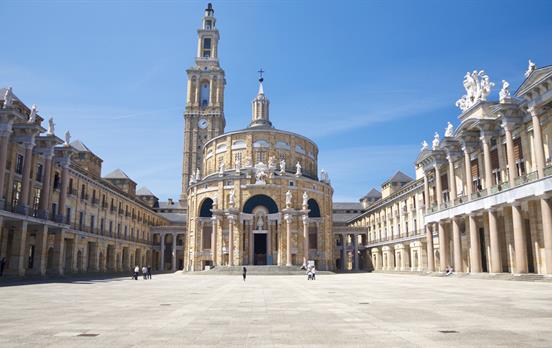
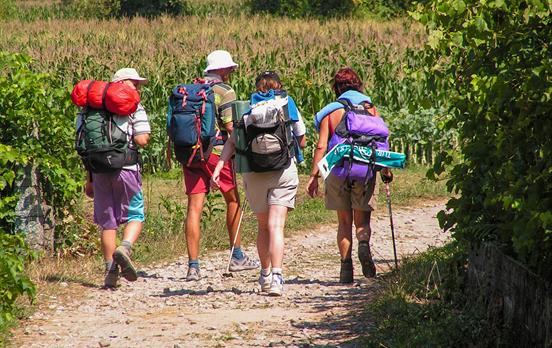
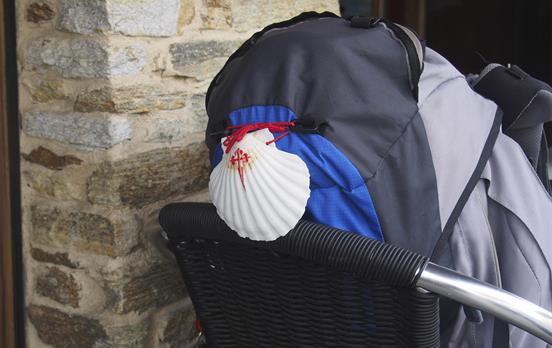


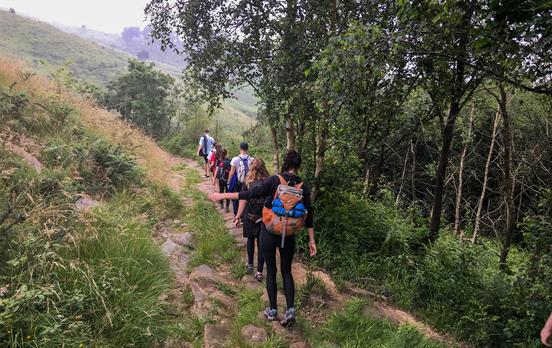
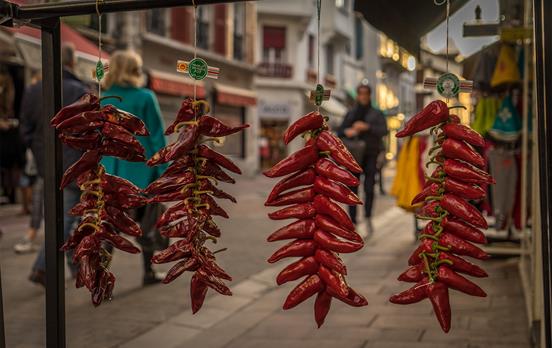



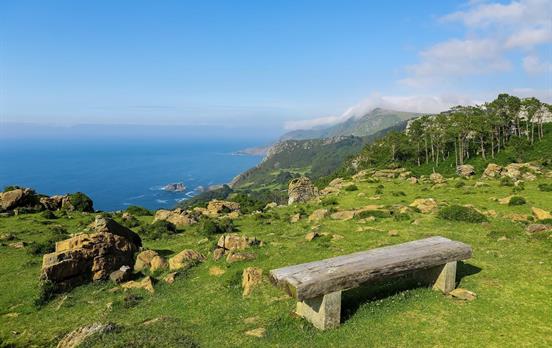

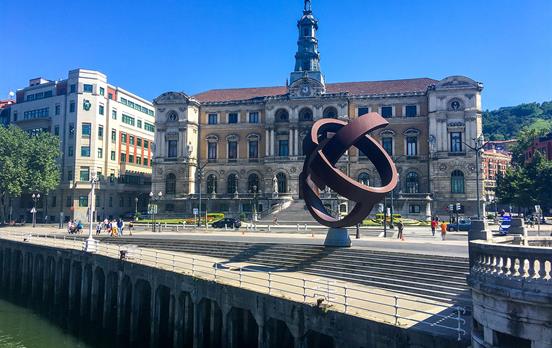
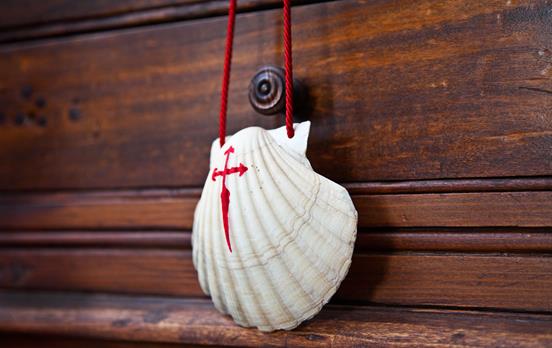
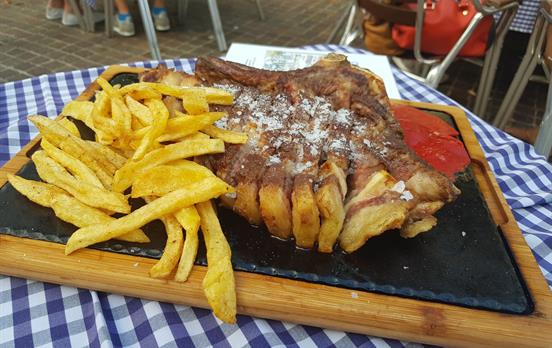
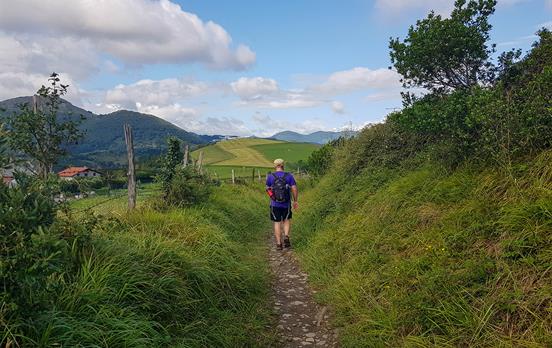

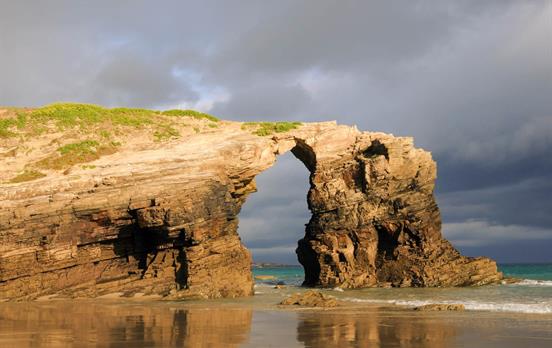



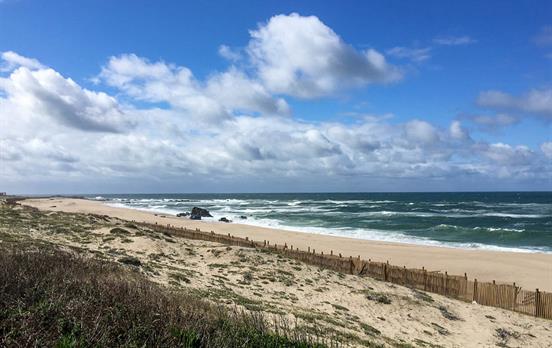

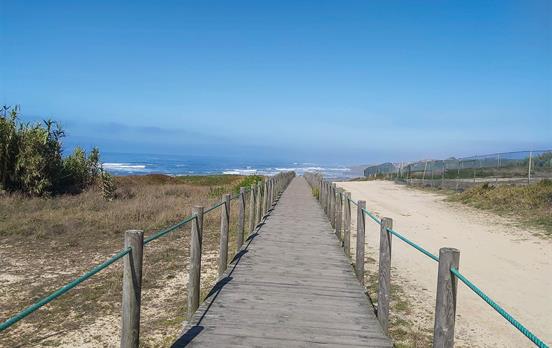
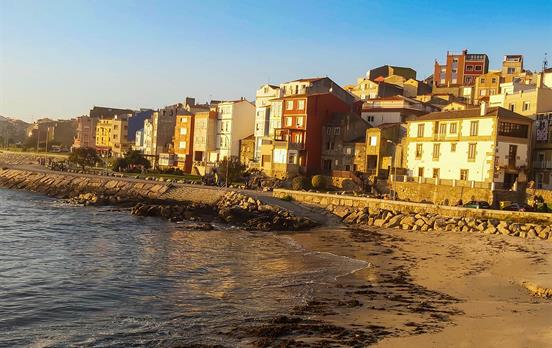
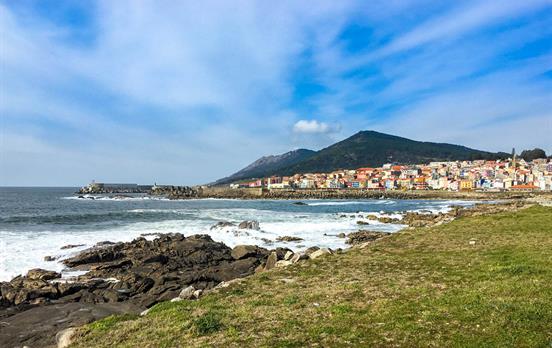
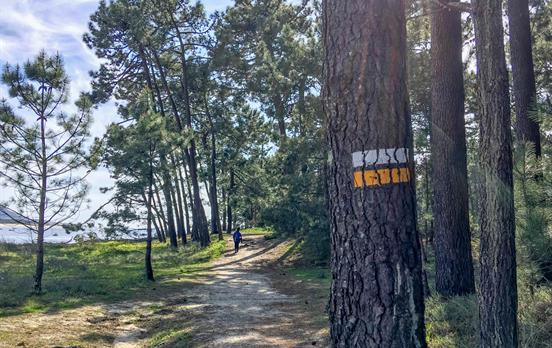
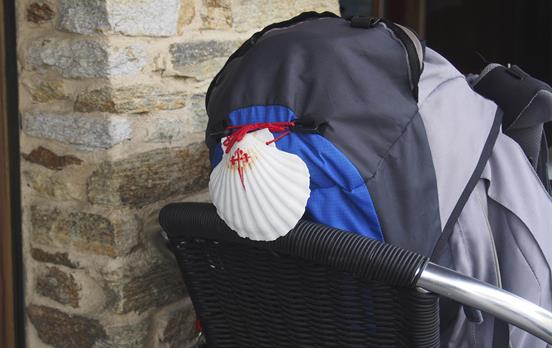

 Canada
Canada